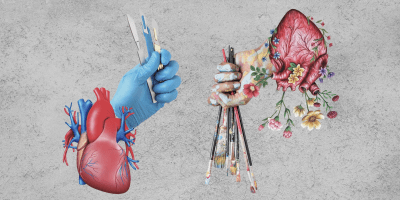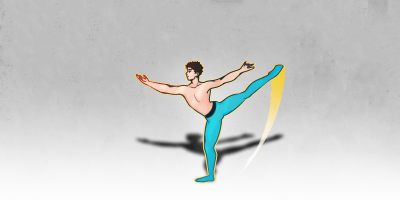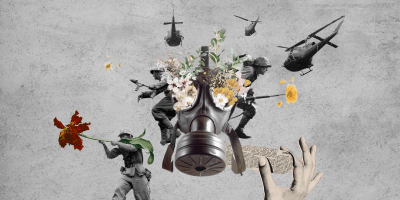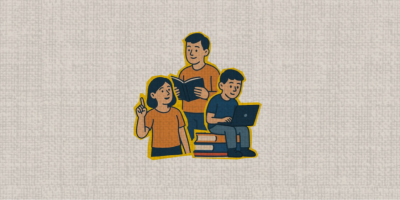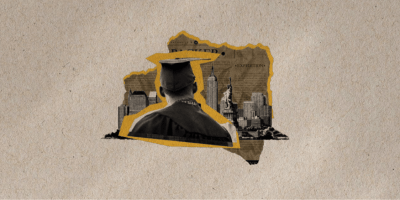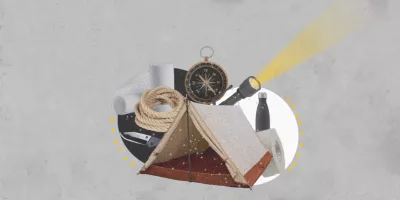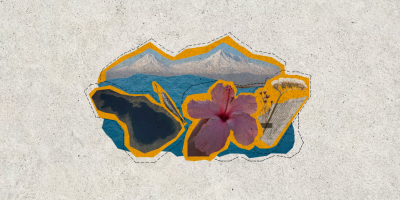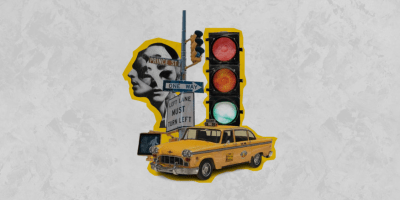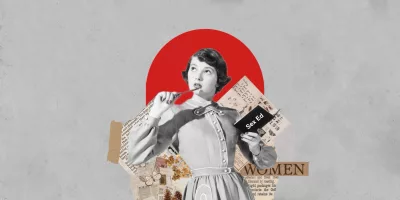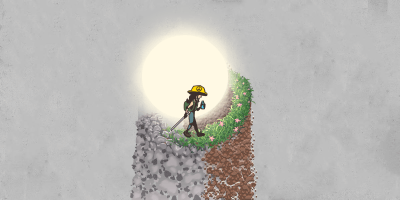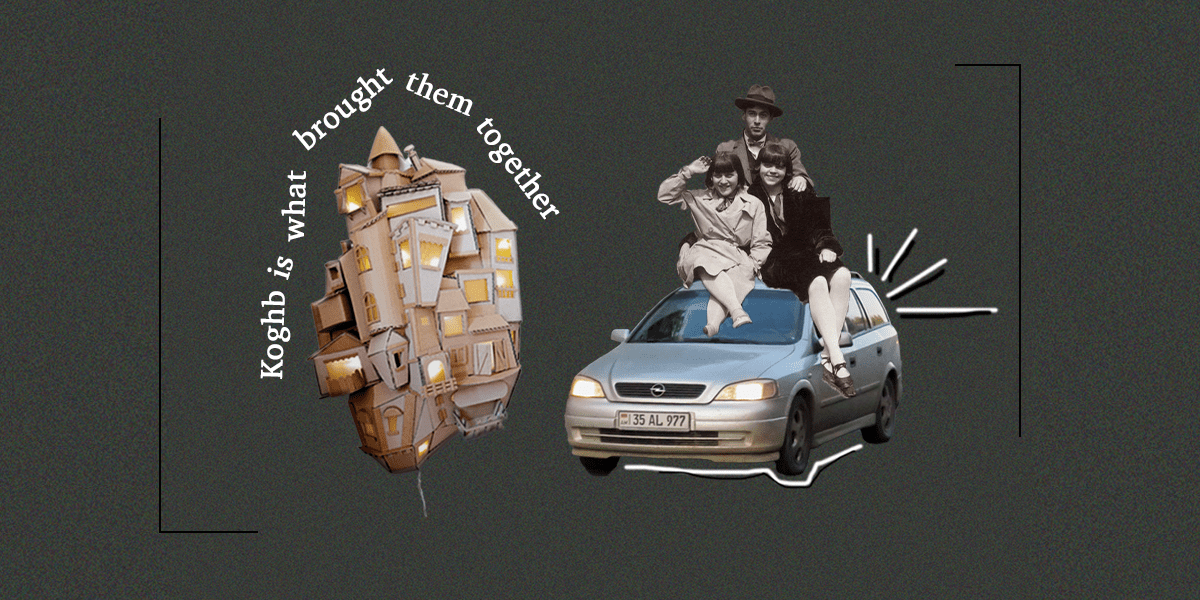
The mountains on the Ijevan-Noyemberyan highway are covered in dazzling snow that takes taxi driver Samvel Bablumyan and his three passengers closer to the Armenian-Azerbaijani border. On one side is Azerbaijan; on the other, Samvel’s silver Opel is speeding to get through the roadway closely watched by the Azerbaijani side.
“Even if your car is dying, you should push on the gas and get out of this part,” Samvel says.
“Do they open fire?” one of the pale backseat passengers asks.
“Of course, they do. You should drive as fast as you can,” sighs Samvel and drives towards Koghb, an Armenian village far from the Armenian-Azerbaijani borderline by five kilometers only.
Koghb is what brought Samvel and his passengers – three students from AUA – together on a cold sunny day to discover the cultural treasures it boasts. The largest rural community in the Tavush region, Koghb has a population of about 5100. It is considered one of the cultural centers of the region that brings together love for culture and art education.
By walking in the curvy corners of the village, one can spot factories, cozy stores, taxi service centers and bakeries that offer employment opportunities to the residents and keep the village life more dynamic. “Employment problem is relevant all-around Armenia, but thank God, we have many available workplaces for our people,” says Sasun Muradyan, director of Koghb Cultural Center. Unlike many other villages in the region, Koghb has two secondary schools, two kindergartens, two libraries, a cultural center, an art school and a music school.
“It’s a village of traditions,” explains Muradyan. He says the residents don’t want to turn it into a city but keep the village as it is. Through his observations, the emigration level in Koghb is “comparatively low” as the residents don’t tend to leave their birthplace. “Despite living right next to the Azerbaijani border with a high risk of getting bombed every possible instance, we do our best to protect our homeland, stay here and prosper.”
Cultural life in Koghb is quite active with youth attending music school, theater performances, museums and other cultural events organized by the locals. Koghb’s cultural life thrives daily with the support of the village administration and the efforts of the Koghb Cultural Center (KCC) staff. Established in 1945, it has about 14 employees who organize memorable days, holidays and other events mainly with the participation of local talent. Children love watching puppet performances at KCC that Muradyan himself leads with the puppets he makes. “We want people living next to the borders to disconnect from the everyday problems through theater performances and make them laugh for a little bit.”
The center houses two libraries and the Koghb museum, which Muradyan often updates with the residents’ help. The small exhibition hall displays hundreds of artifacts from the Bronze Age to the present. Handicrafts, coins and antique jewelry collections, corners dedicated to famous people of Koghb, photos of the victims of the Great Patriotic War, letters from soldiers and household items bring together the old and new history of Koghb. The fresh dust of the gently folded letters shows the amount of care Muradyan puts into the development of the museum and the center overall. A special corner is allocated to the soldiers who fell during the 2020 Artsakh War. The meticulous grouping of the exhibits can help the visitors travel through different periods and get to know the life of the Koghb people. “The number of exhibits and visitors of the museum is increasing day by day, who leave their notes and impressions in our guest book,” Muradyan explains with a smile on his face. He says museums create a collective memory of the nation and each community should strive to have one.
The blue house-like building down the road with a shiny red roof and a garden full of recycled tire pots is Koghb Charity Art School, where more than 100 elementary to high school students receive free art education. A fellow village artist Karo Ghulijanyan established the school in 1999 to discover and unite the gifted youth of the region. The school’s mission is to promote and enrich cultural life in and outside Koghb.
He started from very little and despite encountering financial and other challenges, the school stands still, welcoming art lovers and promoting patriotism through cultural development. “I took a room, then the second and third, and little by little created what we have today,” the artist shares and adds that the school is supported by his children, students and teachers who work here as a big family. The school had to put age limits on the acceptance as there were too many applicants and too little space to host them all. The tiny rooms are full of portraits, handicrafts on the shelves and children with clay on their hands that welcome the visitors with joyful eyes. Different church melodies are playing in the rooms, letting the students and teachers immerse themselves in their crafts.
Students from Koghb, nearby communities and even the Lori region come to practice drawing, composition, pottery and carpet weaving and learn about art history. “It is like our second home. We created our world here,” shares Anna Nasibyan, who’s been working at the school for more than 20 years. She confesses that they will come here to teach and create whether they get paid or not. Many alumni return to teach here or organize art events for the students. “Our staff does everything to help the school and each other. It is just like in a family,” says pottery teacher Hripsime Mantashyan. Together, they participated in many exhibitions and symposiums, but it was challenging for them to reach Yerevan every time. Despite being a borderline village that limits their movement and participation outside community activities, they build, create and raise the younger generation through cultural patriotism.
The school director, who examined art and cultural centers of more than 26 communities in Tavush, found out that the ones with a lack of resources “thrive more than those who have the opportunities.” He encourages his compatriots to search for alternatives to express their patriotism through different dimensions. “Love for your culture and art is also an act of patriotism, so take the pencil and let me teach,” says Gulijanyan and shows the three visitor-students how to start painting from scratch.
The snowy road from Koghb to Ijevan, which is under constant observation of the Azerbaijani forces, shines with a silver Opel spreading to pass through. Koghb seems brighter for the backseat passengers that take home new definitions of patriotism, art and culture.

